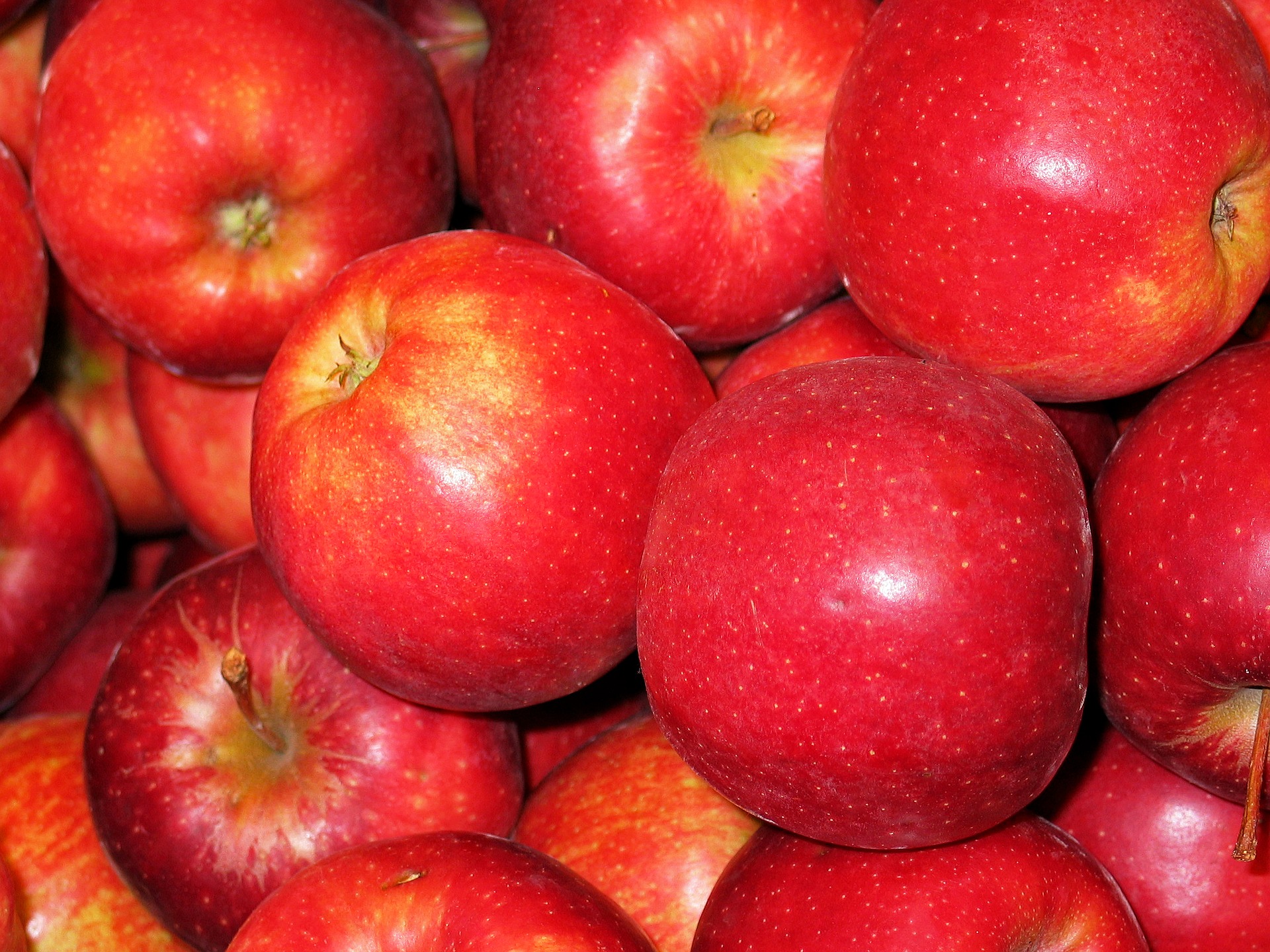Gala and Pink Lady: They’re both small, mildly sweet apples, making them highly kid-friendly. And, they have that lovely red blush over a yellow/green skin.
Let’s check out the difference between Gala and Pink Lady apples.
Gala apples:
- Season is mid-August to early September.
- Because they’re harvested so early, they tend to be smaller than other apples.
- Have a “taste picky eaters prefer.”
- Have a flushed red color.
- Have a mildly sweet flavor.
- Have a long storage life.
- Uses – best for eating fresh, in salads, or with applesauce. Although they’re not great for pies, they work well with other baking purposes – apple cake, apple stuffing, etc.
Gala apple trees:
- Are partially self-fruitful.
- Are very susceptible to scab, cedar apple rust, and fire blight.
- Need to be heavily thinned.
Gala apples hail from New Zealand, where orchardist J.H. Kidd crossed Golden Delicious apples with Kidd’s Orange Red in 1934. Although, some say the parentage includes Cox Orange Pippin and Red Delicious.
Royal Gala apples, a strain of Gala, were developed around the same time, also in New Zealand. They were named for Queen Elizabeth II, who was visiting.
While Gala apples were first being cultivated in 1934, they weren’t available for commercial production until 1965. They made their way to the US during the following decade.
Pink Lady apples:
- Are a trademark brand.
- Are the number one apple in Australia.
- Grow on the trees early in the season, but are picked very late.
- Have a higher fructose content than other apples.
- Uses – best for eating fresh, in salads, or with applesauce; decent for pies and other baking uses.
Pink Lady apple trees:
- Are not self-fruitful.
- Do well in warm and hot climates, but oddly hold up well in cold also.
- As with Gala apple trees, they are highly susceptible to fire blight and cedar apple rust.
- Are also vulnerable to scab and mildew.
John Cripps developed Pink Lady apples in Western Australia in 1973, in a marriage between Golden Delicious and Lady Williams.
Like Gala apples, Pink Ladies tend to be smaller and sweeter than other apples, making them perfect for having kids eat fresh. Unlike most other apples, they are a trademarked brand. In other words, you would need a license to grow a Pink Lady tree.
According to their website, true Pink Lady apples are recognizable by their pink, heart shaped stickers, that are “a symbol of elegance and sensuality.”
Furthermore, they can be more expensive than other varieties because of the long ripening process – as mentioned before, they are the first to appear on the tree, and the last to be picked, extending the season into late October. This procedure requires the grower to be on hand all the time.
Pink Lady apples made it to commercial production in Australia in 1989, and in the US in the late 1990s, making them a very recent addition to our country.
As we can see, both Gala and Pink Lady apples aren’t bad cooking apples – they hold their shape well – but their sweetness makes them more ideal for eating fresh or in salads.
Both trees are more difficult to grow than other apple varieties, being more susceptible to infections.
The primary difference between the two types is that Pink Lady is a registered trademark brand apple.
